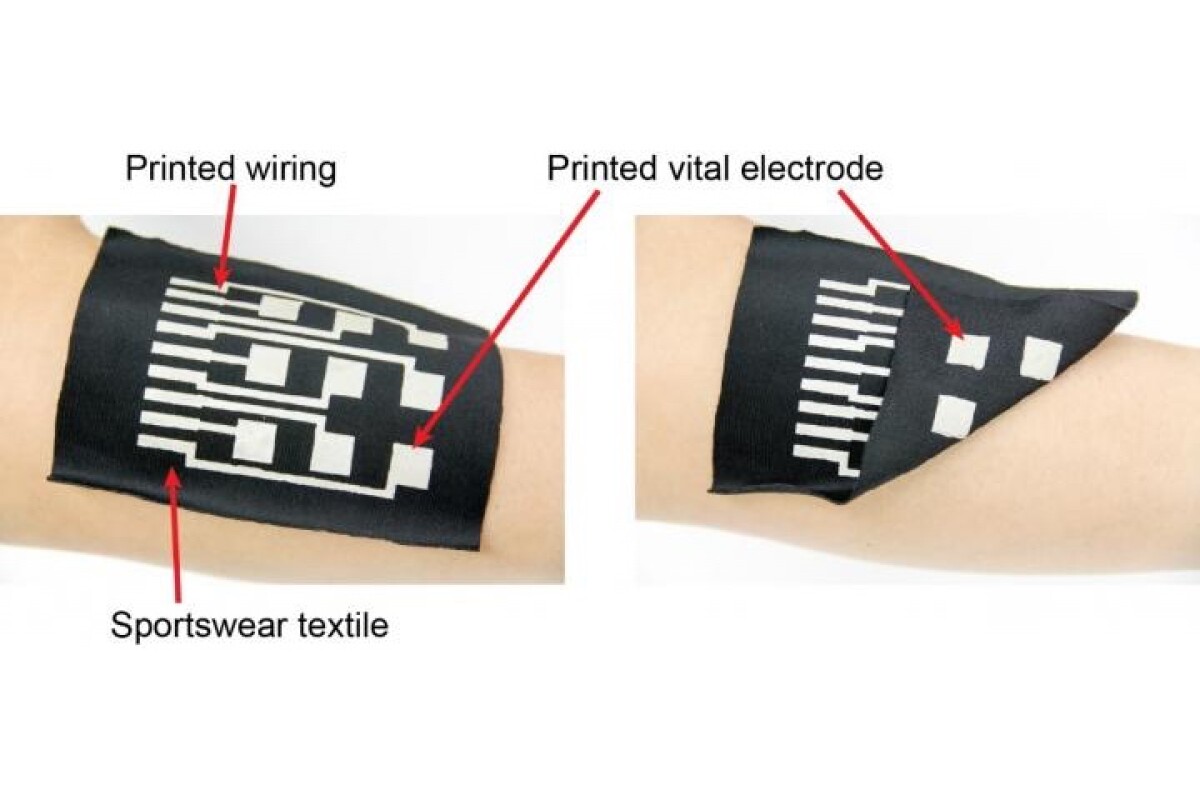A new single-step printing process uses an elastic conducting ink to turn clothing and other textiles into flexible, wearable electronic devices or sensors. Researchers at the University of Tokyo developed the ink, which remains highly conductive even when stretched to more than three times its original length. They believe it has applications in sensors built into sportswear and underwear and that it could be part of a shift toward more comfortable wearable electronics.
The ink contains a mix of silver flakes, organic solvent, fluorine rubber, and fluorine surfactant. It can be applied with the same convenience of a Voltera V-One and other desktop printed ink-based paper and plastic circuits. And unlike another recent research project that produced flexible circuits using nanoparticle liquid-metal ink, the Japanese researchers' solution requires just a single step – print the ink onto the surface and you're done. It works in one step because the silver flakes self-assemble at the surface of the printed pattern, which gives the material high conductivity.
As a proof of concept, the researchers used their ink to print a muscle activity sensor onto a stretchable cloth, with the electrodes printed on both sides and the wiring printed only on the external side of the material. This wristband muscle activity sensor could measure the electrical potential of the muscle(s) beneath it over an area of 16 sq cm (2.5 sq in) thanks to its nine electrodes placed 2 cm (0.8 in) on a 3 by 3 cm grid.
The researchers hope that their technique helps make wearable devices more comfortable and widespread. The future of technology, as we've reported before, may be all about molding electronics to your body and integrating sensors in everything you wear.
A paper describing the research was published in the journal Nature Communications
Source: University of Tokyo





